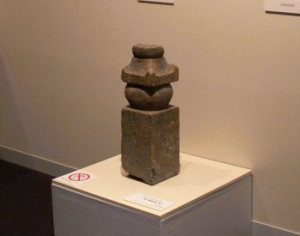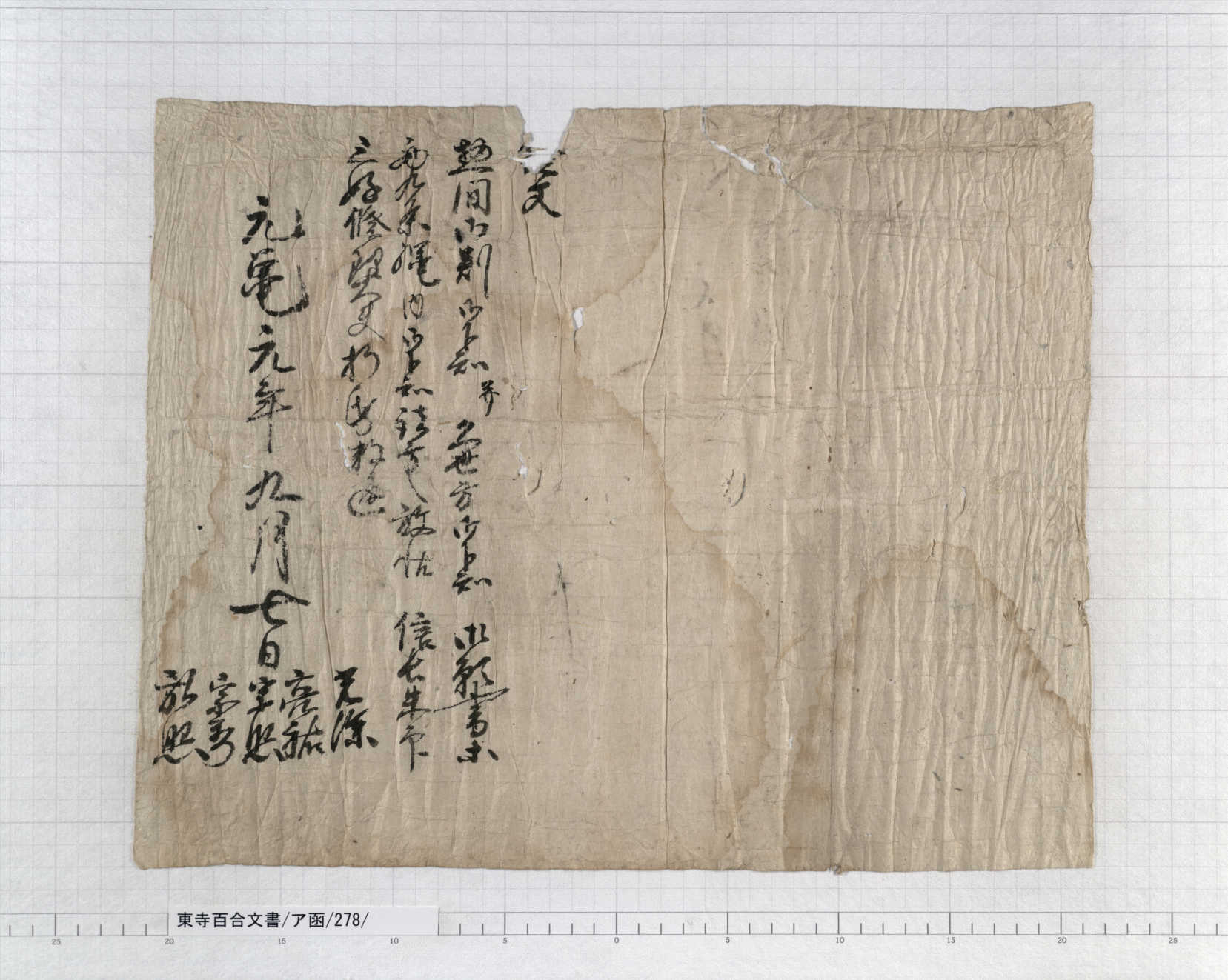
Stone pagoda unearthed near the site of the Rajomon gate, owned by the Museum of Kyoto
* This image is not provided with a CC BY license.
An excavation in 1961 unearthed a stone pagoda near the presumed site of the Rajomon gate (羅城門), close to Toji Temple. On this stone pagoda, the following letters were recorded:
天正八年
(Sanskrit alphabet “Ā”) 権僧正亮祐大和尚位 (Gonnosojo Ryoyu Daiwajoi)
壬三月十八日
This is a tombstone for a monk named Ryoyu (亮祐), who died on Uru (leap month) March 18, 1580. Research uncovered that Ryoyu was a monk at Toji Temple, who was formerly named Yuju (祐重) . He served as the Inju (head) of the Hogon’in building of Toji Temple. Yes, he was the very man, Hogon’in Yuju (宝厳院祐重), who was mentioned in “11. Sakai in the Sengoku period, as seen by Yasui Soun” and “12. Takiyamajoe Castle in the Sengoku Period, as seen by Yasui Soun” in the Stories behind the Hyakugo Archives, as being advised by Yasui Soun (安井宗運) concerning liaison with Matsunaga Hisahide (松永久秀).
It seems that Yuju/Ryoyu carefully examined the text of letters to be sent to Matsunaga Hisahide. For example, the “Draft Letter by Hogon’in Yuju”, dated June 13 (Box Katakana CHI, No. 240), an apparent draft letter, shows the marks of his proofreading.

With respect to the younger days of Yuju, it was included in the agenda whether or not Sanmiko (a monk title) Yuju should be added to Guso (monks who serve the principal object of worship at a temple) at a Hyojo (meeting) of Chinju-Hachimangu-kata (representatives of the Chinju-Hachimangu Shrine) that was held on January 21, 1523. After he was promoted to Guso, Yuju attended a Hyojo of Chinju-Hachimangu-kata (鎮守八幡宮方) on December 20, 1526.
Subsequently, Yuju was active in various aspects of Toji Temple activities, as a Guso and Nengyoji (annual organizer) in in-house organizations (see “5. Nengyoji” and “6. How were Nengoji elected?” in the Stories behind the Hyakugo Archives), and as the Inju of Hongoin. Yuju handed over the document box of Zoei-kata (department for construction and renovation) to Kanchiin Eisei (観智院栄盛) at the end of 1562 (Item 276 of Box A [Katakana]). After he was renamed Ryoyu, at the end of 1563, he handed over the document box of Saishokoin-kata (representatives of the Saishokoin building) to Hobodaiin Zenga(宝菩提院禅我) (Item 212 of Box O [Katakana]).
There is also a document envelope dated September 7, 1570, signed by Ryoyu and four other Guso among Saishokoin-kata, which presumably enclosed a Shuinjo (shogunate license with a red seal) issued by Oda Nobunaga(織田信長) and an official document written by Miyoshi Nagayoshi(三好長慶) (Item 278 of Box A [Katakana]).

Even though Ryoyu, with his name recorded on the stone pagoda that was unearthed near the site of Rajomon, was not a famous historical character, the marks of his life can be traced over more than 50 years in the Toji Hyakugo Archives, through the documents that Ryoyu received, wrote, and/or managed.
(Yoshitomo Nagamura, Curator, the Museum of Kyoto)